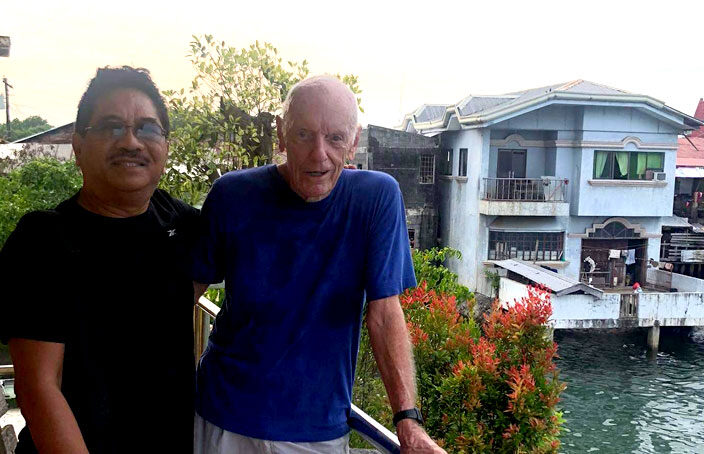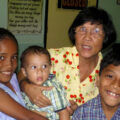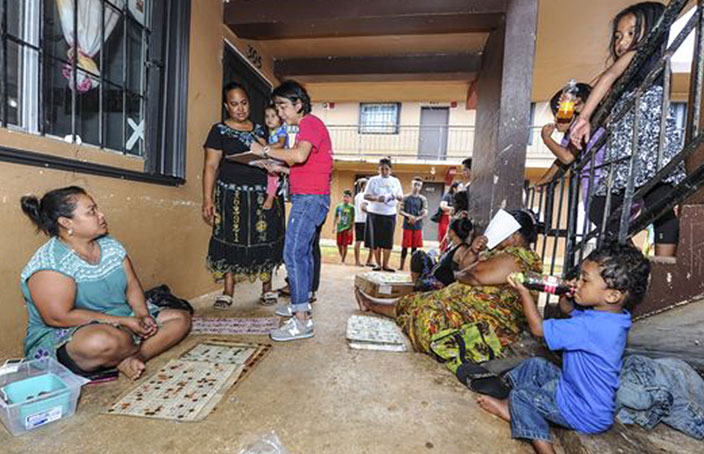Elsa’s Funeral at Mindinao
On April 12, very early in the morning, I left Guam to attend the funeral of of Elsa Veloso, the “co-founder of MicSem” and a dear friend over the thirty years of her work with us. After seven hours at the airport in Manila, I caught a flight to Cagayan de Oro in Mindanao. There I was met by my old friends Danny and Arlene Dumantay, along with Elsa’s niece Melba. It was dinner time and we all had so much catching up to do that we decided to spend the night in the city and make the three-hour drive to Kinoguitan, Elsa’s hometown, the next day.
As my three friends in the back seat chattered away in Tagalog, I sat alongside the driver simply mesmerized by everything I saw—the familiar stores, the marketing slogans on billboards, the motorcycles (zillions of them, it seemed), the endless rows of sari-sari stores, women wrapped in head scarves and sometimes much more (this is Muslim territory, after all). It brought waves of nostalgia—memories of many previous visits to the Philippines, which I call my spiritual home. Here I was, once again in Mindanao, but this time to lay to rest an old friend who had helped me make friends with her family and so many others.
After the three hours to Kinoguitan, there followed a reintroduction to the family members and then a hesitant entry into the room with the casket. There was Elsa, looking nothing like the woman I had worked with for so long. It wasn’t just her hair, now gray and thinner than I remember (she had stopped dyeing it a few years ago, she told me). She looked so distant, so unsmiling, so much unlike the woman we knew and loved.
Repeatedly during the next two days I entered the viewing room and stood before her casket wondering why we couldn’t have had one more long drive somewhere in the mainland to visit those fruit stands and stop along the way to admire the scenery, as we had done on those memorable trips over the years. Why couldn’t she have at least waited until the reunion planned for her birthday this coming June?
But my feelings would shift at times to deep admiration of what she had done for so many. Who would have thought that the shy young lady from small-town Mindanao would become such a beloved figure in the islands!
There I was, shaking hands with the Varias-Veloso family–four generations—while trying to remember who is who and where I first met them. After all, Elsa and I had visited her relatives in California, Maryland, Pennsylvania, and Virginia during our occasional business trips in search of materials for the MicSem library.
Food and more food is always at hand in what might be called merienda-land. Empanadas, pulverons, choco rolls, and so much more. All this made my afternoon walk/run more necessary. But the time on the road was also a chance to absorb a little more of the village. As I jogged past the parked jeepneys, the school crossings, those sari-sari stores, I thought I heard someone call “Hey Fran.” How did he know my name? I wondered, Then it came to me: he was simply saying “Hi, friend.” Now and then, I would be greeted simply as “Joe”—sthe old form of address for Americans, perhaps a survival of “GI Joe.”
The funeral mass on Saturday morning was held at the church that Elsa attended faithfully each day. The choir sounded good and well-practiced—a reminder of the choir that she conducted on Pohnpei over the years. The church was filled with family and friends, with her sister Enan sitting in the first row weeping continually, But even the younger girls in the family sitting off to the side with white blouses were also dabbing their eyes throughout the service.
It was a touching mass, at least for me, but nothing was more emotional than the blessing of the body at the end of the service. There was Elsa’s face, eyes closed, reminding me of so very much. Her death was a test of faith for me—an opportunity to test my own belief in the propositions that I offer others at funerals back on Guam. Does she live on, and will we meet again? Sure. How can we believe in the resurrection of the body if it doesn’t include cherished relationships in this short life of ours?






